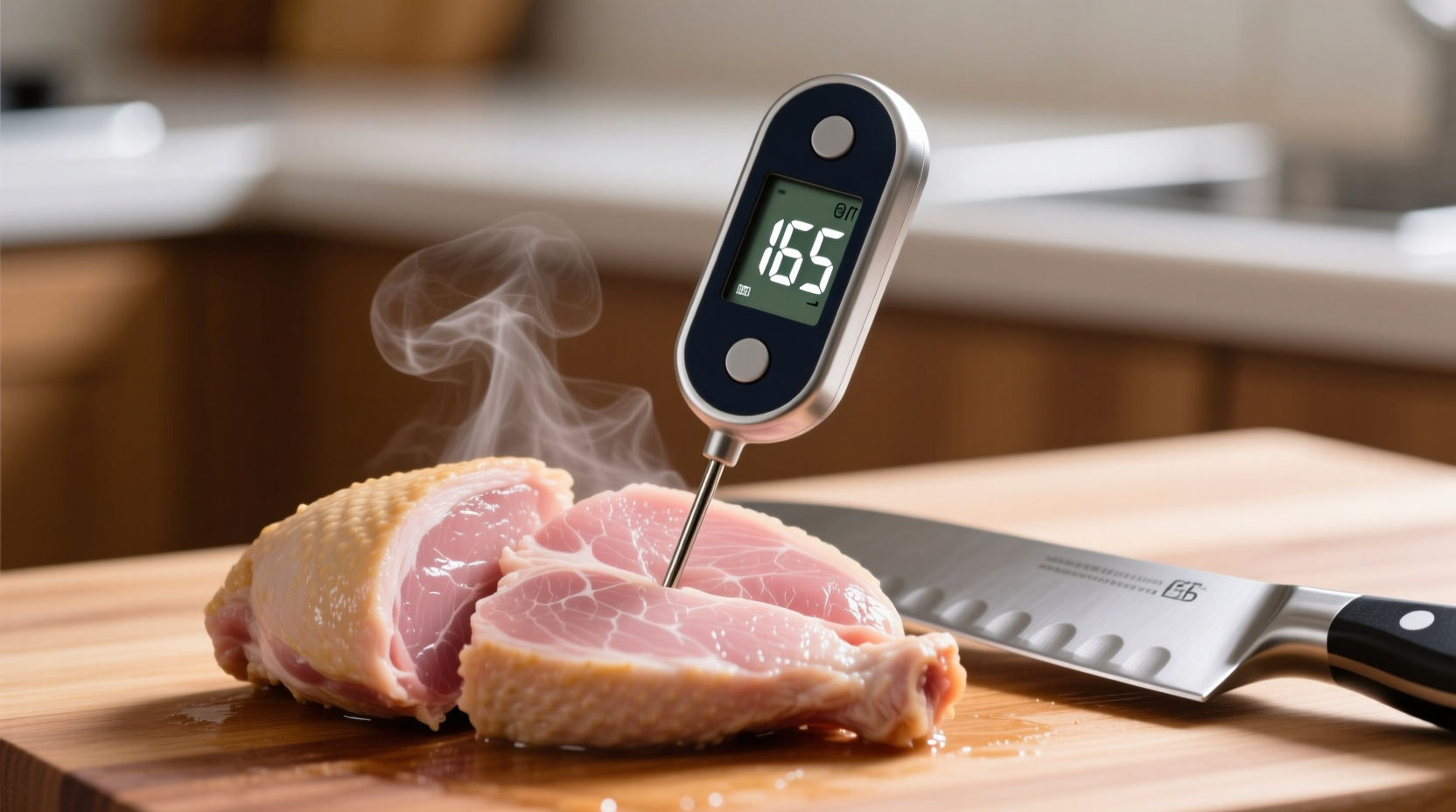Why Chicken Temperature Matters More Than Cooking Time
Many home cooks rely on cooking time or visual cues like color to determine if chicken is done. This approach is dangerously unreliable. Food safety experts emphasize that internal temperature is the only accurate way to verify chicken is safely cooked. Here's why:
Chicken can appear fully cooked—white throughout with clear juices—while still harboring dangerous pathogens. Conversely, properly cooked chicken might occasionally show a slight pink tinge near the bone, which doesn't necessarily indicate undercooking when the proper temperature has been reached.
The Science Behind Safe Chicken Temperatures
Understanding what happens at different temperatures helps explain why 165°F is the critical threshold:
| Temperature | What Happens to Chicken | Pathogen Status |
|---|---|---|
| 140°F (60°C) | Proteins begin to denature | Salmonella begins to die but requires 35+ minutes |
| 150°F (65.5°C) | Moisture starts releasing | Salmonella dies in about 3 minutes |
| 160°F (71.1°C) | Significant moisture loss begins | Salmonella dies in less than 15 seconds |
| 165°F (73.9°C) | Instant pathogen destruction | Instant kill of all harmful bacteria |
This temperature progression demonstrates why the USDA established 165°F as the standard—it provides an immediate safety margin without requiring extended holding times that could lead to overcooking.

How to Properly Measure Chicken Temperature
Using a food thermometer correctly is essential for accurate readings. Follow these professional kitchen practices:
- Choose the right thermometer: Instant-read digital thermometers provide the most accurate results (typically within ±0.5°F)
- Calibrate regularly: Test your thermometer in ice water (should read 32°F/0°C) or boiling water (212°F/100°C at sea level)
- Insert properly: Place the probe into the thickest part of the meat, avoiding bones, fat, or gristle
- Check multiple spots: Especially with larger pieces like whole chickens or turkey breasts
- Clean between readings: Prevent cross-contamination by wiping the probe with a clean cloth
Temperature Guidelines for Different Chicken Cuts
While 165°F remains the universal safety standard, different cuts have unique considerations:
- Boneless, skinless breasts: Most prone to drying out; remove from heat at 160-162°F and let rest (carryover cooking will reach 165°F)
- Thighs and drumsticks: Can be removed at 162-163°F; darker meat tolerates slightly higher final temperatures
- Whole chicken: Check multiple locations including breast, thigh, and wing joint
- Ground chicken: Must reach 165°F throughout due to increased surface area for potential contamination
Common Temperature Mistakes Home Cooks Make
Even with a thermometer, these errors compromise food safety:
- Not waiting for stabilization: Digital thermometers need 10-15 seconds to register accurate temperatures
- Checking too early: Opening the oven or grill frequently lowers cooking temperature
- Ignoring carryover cooking: Chicken continues cooking 5-10°F after removal from heat
- Using visual cues as primary indicators: Color change doesn't guarantee safety
- Not cleaning between measurements: Spreads bacteria from raw to cooked areas
What Happens When Chicken Is Undercooked
Consuming chicken below 165°F risks exposure to dangerous pathogens. According to the CDC, Salmonella causes approximately 1.35 million infections annually in the United States. Symptoms typically appear 6 hours to 6 days after consumption and include:
- Nausea and vomiting
- Diarrhea (often bloody)
- Fever and chills
- Abdominal cramps
- Headache
Vulnerable populations—including children, elderly individuals, pregnant women, and immunocompromised people—face higher risks of severe complications from foodborne illnesses.
Temperature Troubleshooting Guide
When your thermometer shows unexpected readings, consider these factors:
- Thermometer placement: Ensure the probe tip is in the meat's center, not touching bone
- Meat density variations: Different cuts conduct heat differently
- Carryover cooking effects: Larger cuts continue rising 5-10°F after removal from heat
- Thermometer accuracy: Verify calibration before each use
- Resting time: Allow 5-10 minutes for juices to redistribute before final temperature check
Professional Chef's Temperature Tips
Seasoned chefs use these advanced techniques to perfect chicken cooking:
- Temperature zoning: Create different heat areas on your grill or pan for precise control
- Reverse sear method: Cook low and slow to target temperature, then sear for perfect texture
- Thermometer monitoring: Use leave-in probes with wireless alerts for hands-free monitoring
- Resting protocol: Tent loosely with foil and rest 5-10 minutes before serving











 浙公网安备
33010002000092号
浙公网安备
33010002000092号 浙B2-20120091-4
浙B2-20120091-4